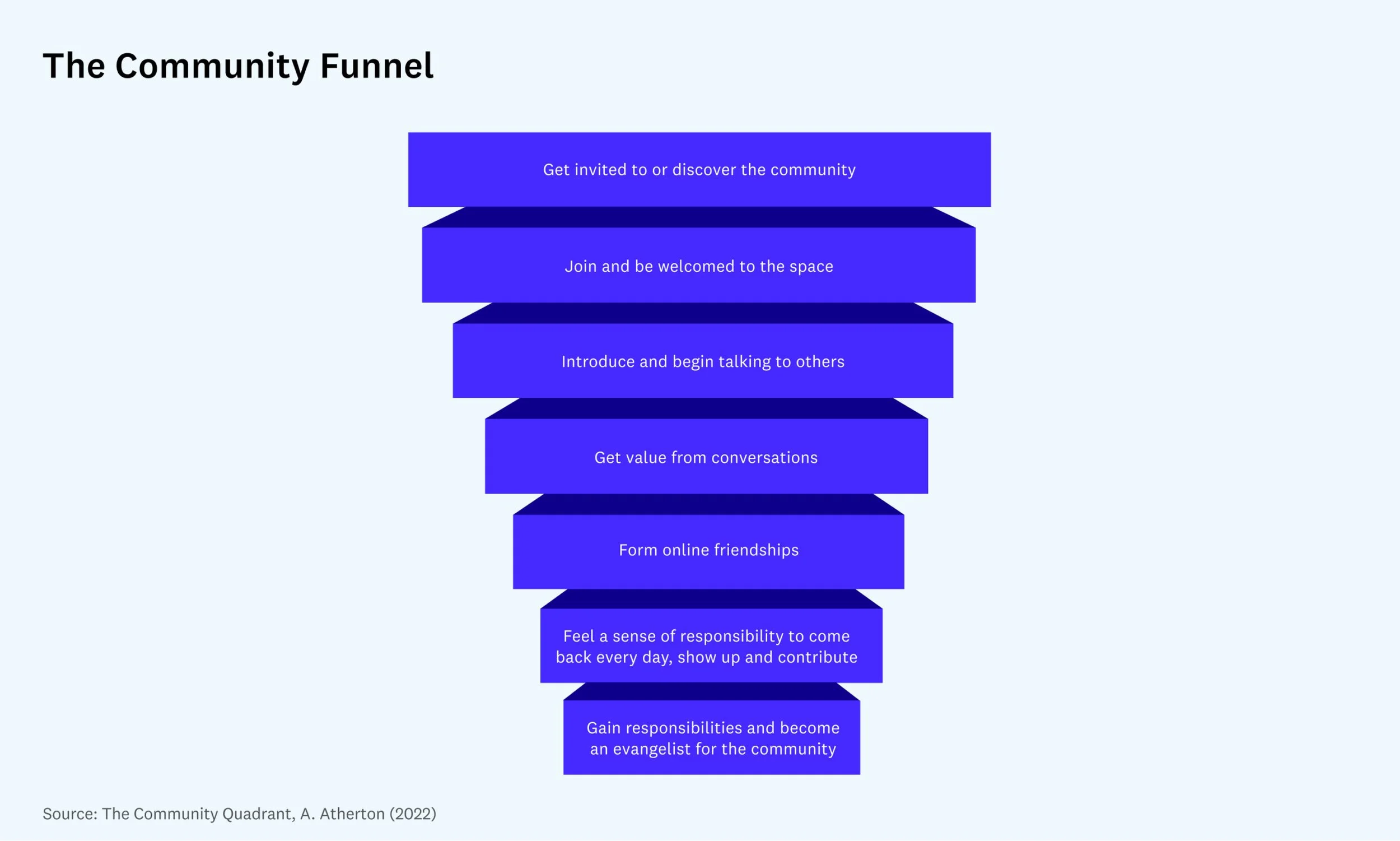5 tips for your Web3 marketing, or the anatomy of pump
by olya green
TL;DR
Growing a crypto product is challenging, and measuring success is the biggest bottleneck. After spending the past six years in the Web3 Wild Wild West, this post shares some hard-earned takeaways for fellow marketoors and founders, citing Q1 incentive campaigns as examples (looking at you, Arbitrum and BLUR). There’s a juicy link compilation at the bottom, so feel free to scroll down for just that.
The usual suspects: funnel, channels, metrics.
When starting marketing for your Web3 project, you might find yourself asking these questions:
How do I get the word out about my project without doing an obscene airdrop budget?
How do I know that my Twitter growth numbers are not bot-based?
What distribution channels should I prioritize for my dApp?
Which growth metrics should my investors care about?
Who are my super users who will drive the network adoption?
Now, how about the classic Web2 brand awareness campaigns via content and SEO? Those work just fine, slightly tweaked for the crypto-specific channels, with heavy focus on Twitter (trust me, if you got your Twitter posting right, you did half the job), Telegram and Discord for user support, Mirror for blogging, Crowdcast and Hopin for events.
The actual user acquisition strategies will vary based on the audience segment and the type of product you’re building: what works for L1, won’t necessarily work for a dApp. Let’s look at the typical audience segments in Web3:
Builders: developers, node operators, and everything in between.
For these, you might want to try out things like dev workshops and hackathons and make sure you have a great DevRel guy on the team.
Ecosystem partners:
Especially relevant for infra L1/L2 projects, with a heavy focus on partnerships and integrations, which assumes all sorts of cross-pollinated marketing activities: AMAs, Twitter spaces, IRL events, and more.
End user: b2b / b2c ‘degens’ (or crypto-natives) and ‘normies’: investors, traders, and actual platform users.
Ironically, degens are probably the most problematic segment, especially when it comes to user retention. Hard to keep these engaged with anything but monetary/token motivation, yet that is very short-lived and most raffles/bounties won’t get you a loyal user. Key tip here: target early adopters and give them a sense of exclusivity, and/or random selection for rewards.
When it comes to measuring success, here are some core metrics you need to track based on your vertical:
L1/infra projects: new wallet addresses, DAWs, TPS, contracts deployed, GitHub commits, number of integrations.
DeFi projects: TVL, number of unique token holders, protocol revenue.
NFTs: estimated market cap, trading volume, floor price, number of unique holders, rarity score.
Content is king, even in crypto.
Building a strong narrative is the first thing you need to do when launching a crypto product. One issue here is that not so many people are ready to delve into the depths of complex concepts of tokenomics and DeFi. So, it is hugely important to distill those into digestible formats: infographics, explainer blurbs, video clips, memes.
I wrote my first piece on DeFi circa September 2018, and content has truly been my go-to tool for building brand awareness ever since. Start small: a few thoughtful threads on Twitter with the right amount of tagging will get you the first eyeballs. From there, start building out your blog but make sure you heads-on address your platform’s competitive advantage. All sorts of visuals work great, with simple infographics explaining the platform’s value props yielding some impressive engagement results. One great technique used lately is learning hubs based on the user segment: Celestia does a brilliant job at this with their ‘Learn Modular’ series grouping content based on the user’s knowledge level.
For analytics, measuring organic ROI is the most challenging part: the concept of ‘lead’ is vague in Web3 and conversion is hard to measure. One tool that I’ve found useful lately actually lets you tackle this by correlating active addresses on the network with Twitter and Discord accounts by pinpointing a particular campaign to a spike in user activity. Pretty straightforward and gets you the right picture. Some conventional web2 tools (Husbpot / SEM Rush) work in a limited capacity, mostly for organizing content, allocating campaign resources, and analytics.
How do you go viral in crypto?
The token is not a panacea for success but it will get the firs eyeballs on your product. When we launched a token at Taraxa, the level of attention and expectations skyrocketed: suddenly we were under the microscope, and there came the price talk. Lesson learned: ask yourself if you’d rather have a high quantity or high quality of users. Then you won’t need to over-moderate your Telegram and kick people out for spreading FUD.
For every single launch we did, the lion's share of work was going into nurturing KOL relations which is a huge pillar in Web3 PR. Careful here though: there are way too many ‘crypto influencers’ with inflated metrics, so make sure you do some proper audit. I find the most useful those who create smart Twitter threads and podcasts on trending narratives.
The beauty of this space is that we’re still fairly early and there’s lots of room for the first-mover advantage. Here’s an idea: a visualization of the current L2 / rollup landscape charting the network fees. The topic is super trending and no one has really done anything like that so far. A good example of a viral campaign is Gnosis Safe’s recent ‘March for Account Abstraction’ hackathon with up to 50K in prizes that featured brilliant motion graphics in line with their big rebranding campaign.
Think you need a huge budget for that? Not necessarily: you’d be surprised to learn about the chunk of organic engagement you can get by simply being active on crypto Twitter. Don’t over-shill your project though, try to share the insight or some original research your team has been doing. This works for reporter outreach as well and helped us secure organic mentions in top-tier outlets simply by sharing a CEO’s take on the FTX saga.
Like airdrop, but make it last.
The recent Optimism airdrop when a huge portion of newly acquired users just bounced after claiming their tokens, illustrates that acquisition via instant token incentives doesn’t work for long-term retention. 40% of the airdrop remained unclaimed, and a majority of new users just dumped the token later. Some users enticed by the airdrop did stick around, but these are hardly the numbers you’d want to see after giving away a huge chunk of the network’s utility token.
Source: Delphi Digital.
One way to tackle this is to implement retroactive distribution, which implies rewarding users who demonstrated a certain degree of activity in the past. Plus, the airdrop needs to be claimable: get the user to actually create a wallet and interact with the platform, even if it’s a simple asset swap. What you’re trying to create here is a sustainable incentive mechanism with user tiers based on contribution (GitHub commits, Discord activity) rewarded by loyalty points, or badges (all of that can be redeemed for a token later). Call it a loyalty program on Web3 steroids.
An interesting user retention idea was just introduced by a16z referring to the notion of ‘waves’, or distinct stages when launching an NFT. It gives the user an unbeatable sense of exclusivity and belonging, which in turn helps to start building a strong network effect from the get-go:
Incentives, incentives!
The next phase in the Web3 funnel requires a lot of thinking around the user perks, or ‘incentives’. General awareness campaigns are great, but the community attention span is short in crypto, so we need to keep the user entertained with targeted campaigns. Quests, bug bounties, anything goes. And make sure you throw in some token-gated features: access to premium content, exclusive invites to IRL events, or a 1:1 Zoom call with the Founder.
Most importantly: keep the excitement alive! A great example here is BLUR’s recent multi-step airdrop with their Care Packages that was gamified in such a way that gave users a sense of the unknown knowns playing upon their psychology.
Some battle-tested tactics to keep your community engaged:
Devs:
Comprehensive technical docs and product guides, workshops and hackathons (both IRL and online), consistent and timely Discord support (especially with major network upgrades).
Ecosystem partners:
Cross-pollinated activities with newly onboarded partners (AMAs, Twitter spaces, events), ecosystem grants, and accelerators. A great example here is Mina’s cohorts and Celo’s virtual acceleration / mentorship program.
End-user:
One campaign that we ran specifically for node operators at Taraxa generated the largest number of new wallet addresses: a time-limited offer to pay their staking fees that also included a referral program where users were getting discounts on those fees. Another thing we did to stimulate user stickiness and engagement was a weekly top-block producer contest for node operators.
Campaigns that earn users tokens (or points and badges for the pre-token stage) to interact with the protocol by completing simple actions, such as swapping or sending assets work great for top-funnel acquisition. These can be executed at quest-to-earn platforms or through your own proprietary community platform for posting and rewarding submissions - gamification and cool UX are very important here.
Ambassador Programs are hugely popular but pretty hard to maintain in terms of user engagement. Some tips here: make sure you build them bottom-up with high user autonomy and diverse task tracks. Coherent documentation and regular communication are key.
An ultimate recipe for a Web3 marketing campaign success? For me, it boils down to three things:
Know your product and break down the value props to the user based on segment.
Have a clear picture of your ideal community member aka ‘power user’.
Nurture your audience and keep the excitement going.
links:
https://multicoin.capital/2023/01/11/the-web3-growth-stack/
https://a16zcrypto.com/content/article/go-to-market-in-web3/
https://mirror.xyz/chapterone.eth/1nhC9xXGmlqOvHX7cmr3bNPdhO7MpEVtHSLAraV9QRc




